Customer
Airport Engineering Services (AES) designs, constructs, and maintains aviation infrastructure worldwide. From over 300 projects delivered in 25 countries, one of their standout achievements is the reconstruction of the Los Angeles International Airport.
Problem: managing projects with strict deadlines and constrained budget
By 2030, Saudi Arabia aims to become a global tourist hub. This initiative seeks to diversify the economy and reduce reliance on oil revenues.
Tourism goals of Saudi Arabia by 2030 according to the Saudi Air Connectivity Program (ACP):
- 330 mln airline passengers
- 150 mln foreign visitors yearly
- 250 international flight routes
To achieve these objectives, the Saudi government plans to modernize 29 existing airports and build several new ones over the next five years. It includes the world’s largest airport, the King Salman International Airport in Riyadh, designed to handle up to 120 million passengers annually.
Saudi Arabia’s travel and tourism to have the fastest growth in the Middle East over the next decade, World Travel & Tourism Council reports. It is expected to grow at an average of 11% annually over the next decade.
Our customer, AES, oversees the construction and modernization of 24 airports in Saudi Arabia. Each project differs significantly in size, duration, complexity and geographic location. AES's responsibilities extend beyond design and engineering; they encompass full-scale project management, including budget control, resource allocation, scheduling, and resolution of legal issues. To execute these tasks efficiently and adhere strictly to government-set timelines and budgets, AES requires a tool for comprehensive project monitoring.
AES provides weekly updates to its customer, a state-owned enterprise responsible for managing airports and implementing the Saudi Air Connectivity Program (ACP). For each meeting, the AES team prepares extensive multi-page reports detailing the current status of ongoing projects and highlighting potential issues. However, these reports quickly become outdated, making it challenging to base well-informed decisions upon them.
Solution: a data-driven platform for airport construction progress tracking
Rubius developed a data-driven platform for AES that gathers real-time data on the progress of construction and modernization projects for 24 airports in Saudi Arabia. Through this platform, AES managers always have immediate access to the current status of each project, enabling swift responses to any emerging situations.
The data-driven platform is also used by representatives of the state-owned enterprise. They gain direct access to relevant data from airports nationwide, ensuring it remains updated and capable of fast report generation for governmental authorities.
The real-time monitoring enables quick situation assessment. An interactive map displays objects where work is currently underway or scheduled. Green zones highlight areas free of issues, while red zones mark problematic locations. Information is organized into three key categories: the general status of ongoing projects, detailed status breakdowns for individual projects, and percentage utilization of allocated budgets.

Priority task list ensures efficient workflow management. A dedicated dashboard compiles all tasks from every project into one consolidated table. High-priority tasks are displayed at the top for quick reference. Each entry includes a brief task description, assigned personnel, due dates, and current status. Additionally, projects with unresolved tasks are highlighted on the airport map, helping users identify areas facing more significant challenges.
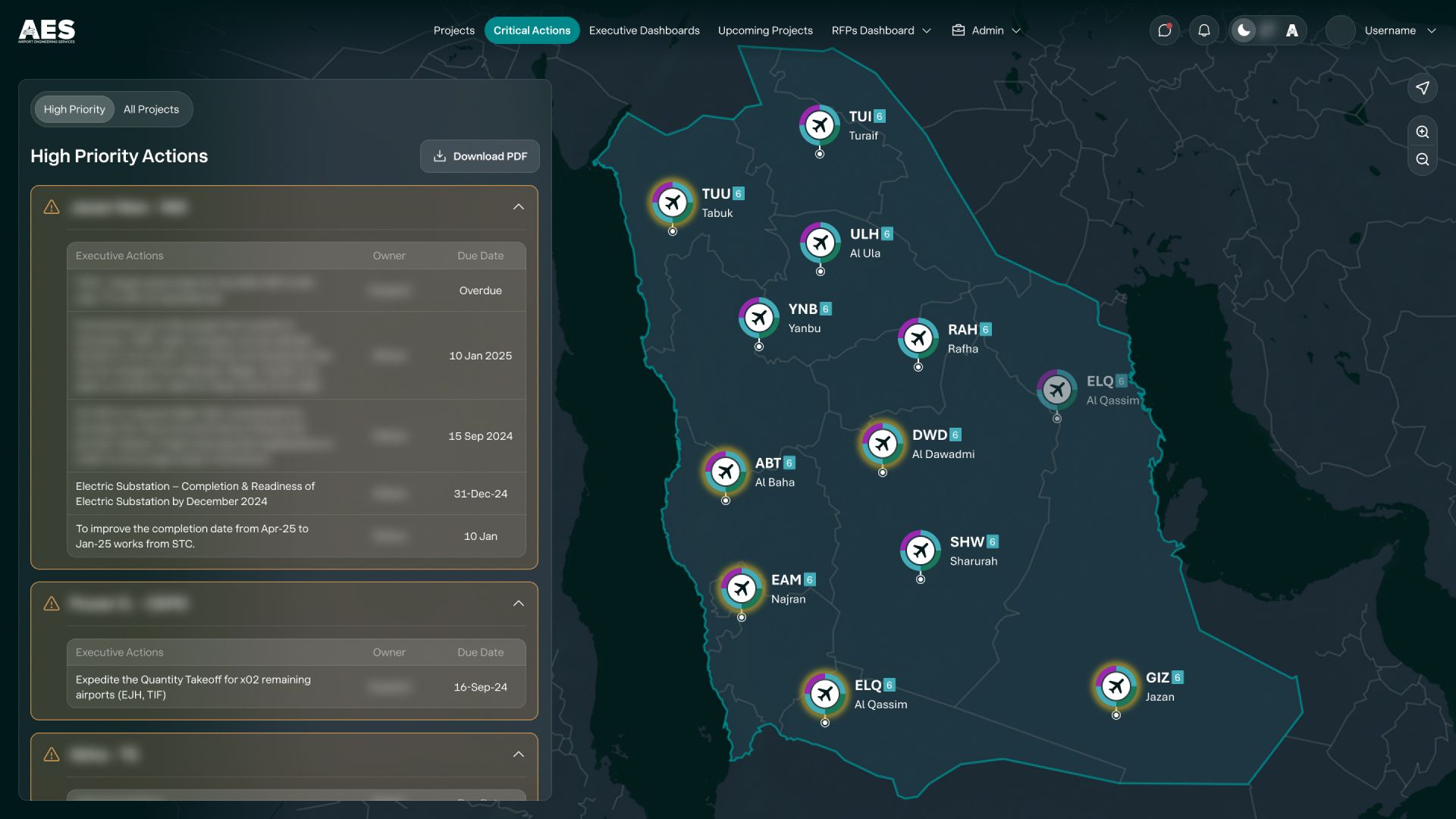
Dashboard for the airport presents key performance indicators (KPIs) for the project: progress, planned versus actual expenditures, and workforce numbers. Users can view detailed records, including activity logs, documentation, photos from sites, and project annotations. When offline reporting or sharing is required, they can automatically generate PDF presentations containing comprehensive project reports.

Each project features a detailed report that helps in identifying risks and monitoring timelines. The dashboard incorporates widgets displaying the current risk ratings for each project, along with the list of potential risks, possibility of occurrence, and corresponding mitigation strategies. Live video from construction sites, visual timelines, and expenditure reports enable efficient time-tracking and progress evaluation. The dashboard integrates functionalities traditionally found in risk logs, technical and financial documentation, task managers, and work schedules, reducing the need for frequent visits to the sites.
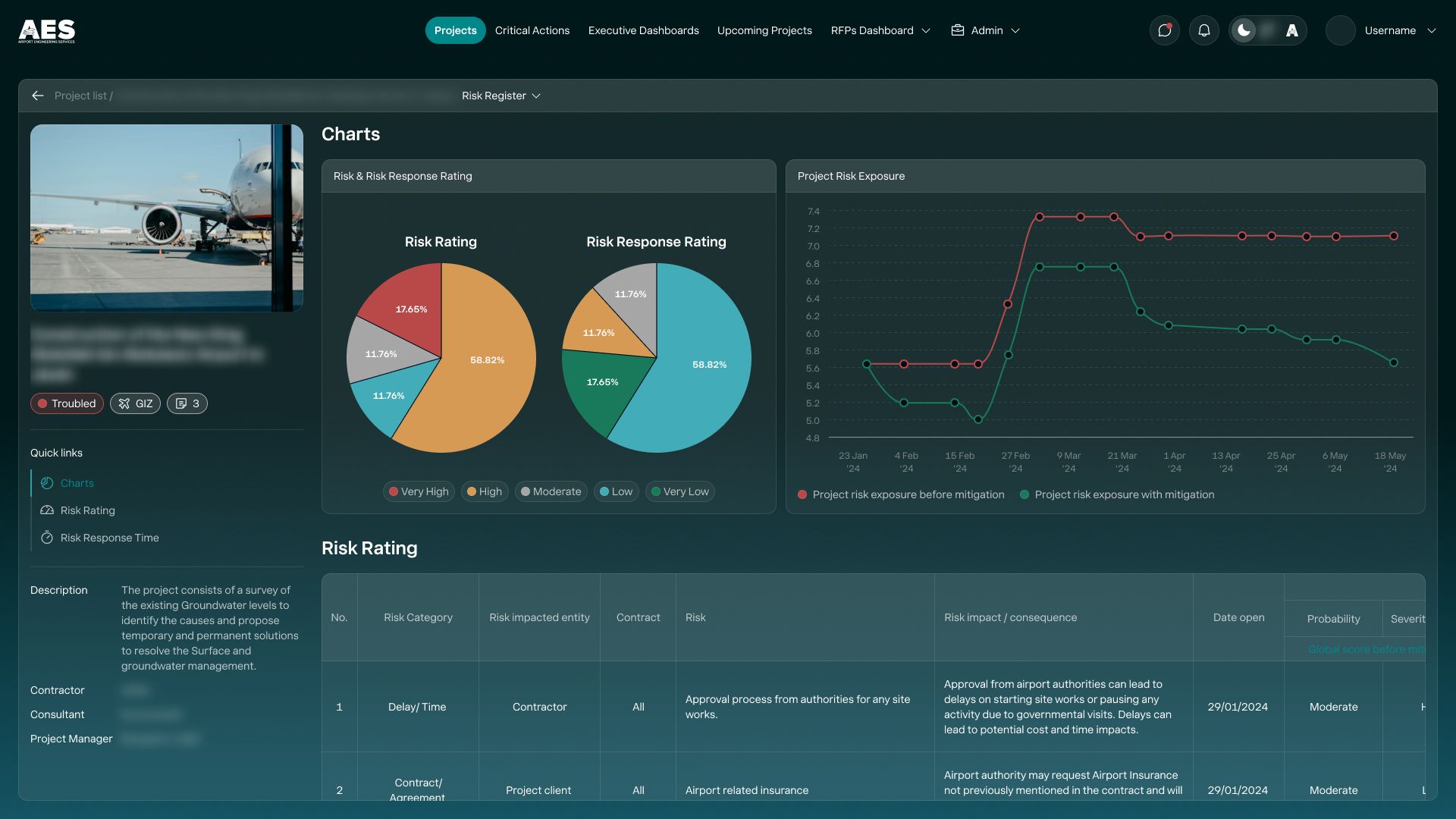
Future projects are also under control across planning stages and pre-auction preparation. A separate dashboard offers a comprehensive overview of all upcoming initiatives, facilitating long-term planning, prioritization, and visualization of potential returns from each project implementation. Every project comes with a short summary, supported by an ROI analysis, allocated budget figures, and projected passenger traffic estimates. Users can get the essentials within minutes, eliminating the need to delve deeply into documentation.
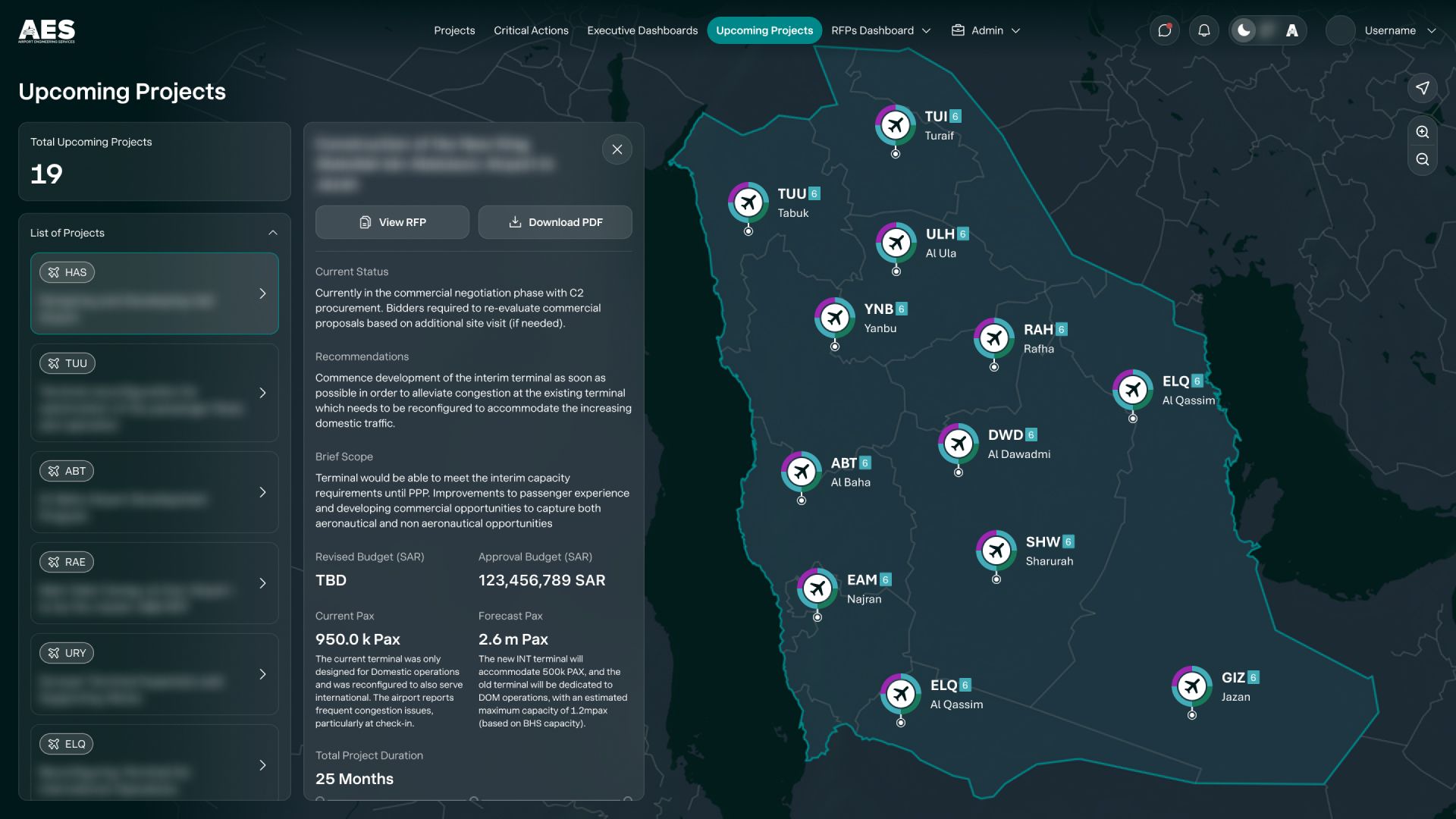
A mobile app and a messenger to stay connected anywhere anytime. The mobile application gives users full access to all features of the data platform, plus additional tools. For instant collaboration, it includes an integrated messenger offering private and group chat capabilities, emojis, and file-sharing options to facilitate rapid communication across teams.
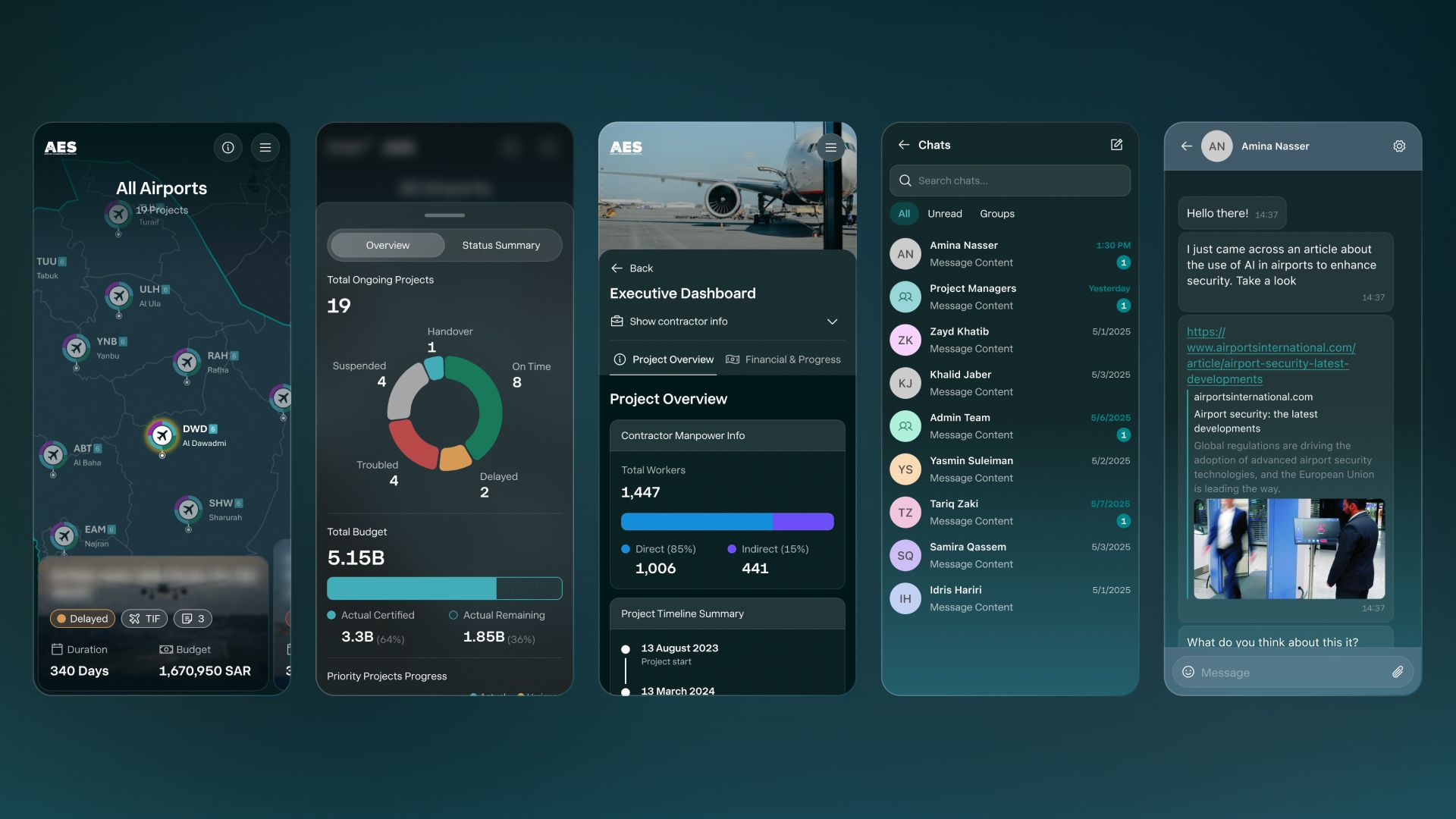
The data is always accurate: uploaded information goes through a temporary storage and validation process. Before being finalized, uploaded data undergoes validation by a super administrator. This admin reviews all modifications, noting who made changes and when. They can annotate files with comments, reject invalid submissions, or request clarifications if necessary.
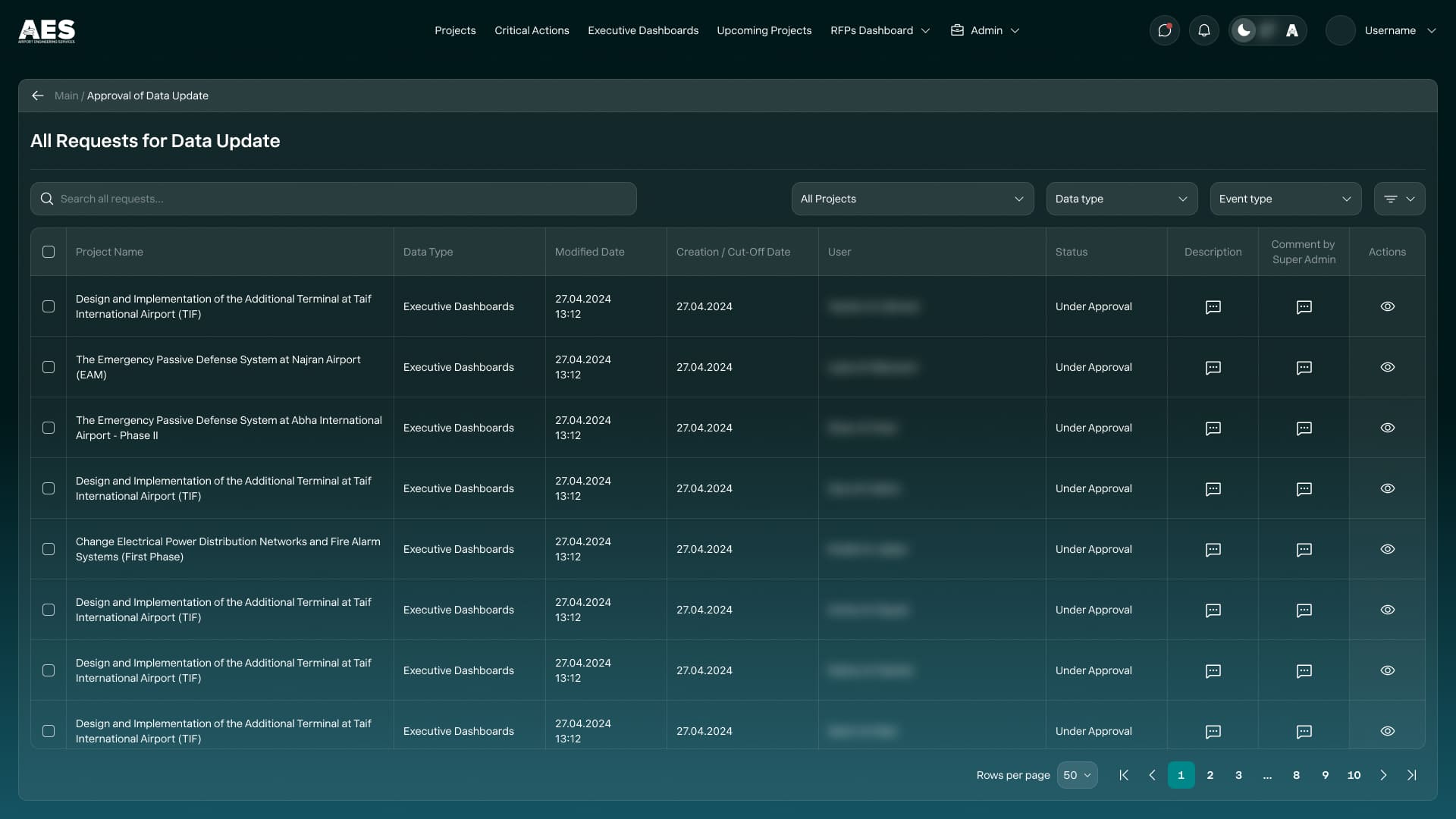
Platform features:
- five subject-relevant dashboards: from quick overviews to lists of critical tasks
- interactive map with ongoing projects
- color-coding system for identification of troubled projects
- event notifications
Quick access:
- mobile application
- chat for collaboration and file sharing among team members
Data management:
- uploading reports on projects as PDF presentations and XLS tables
- data import from Excel
- administration panel for managing user accounts, projects, and access permissions
- flexible role-based model to ensure compliance with the strict information security requirements
Integrations:
- with Procore construction control system
- with CCTV cameras for online monitoring of objects
- through API, with databases, cloud platforms, and legacy systems
Result
The data-driven platform for monitoring airport construction in Saudi Arabia was put into operation in 2024. At the customer's request, we deployed the MVP version just one month later, which allowed AES to free up resources from manual monitoring and report preparation for more strategically important tasks.
Using the data platform developed by Rubius, AES today oversees the construction and modernization of 83% of airports in Saudi Arabia. Notable among these projects is the airport in Neom, the city of the future without cars, with zero carbon emissions and renewable energy sources.
Implementation effects:
- Project management transparency. Subject-relevant dashboards organize information, providing comprehensive oversight of projects at every stage: from initiation to commission. This enables stakeholders to plan workflows years in advance and concentrate efforts on strategic objectives.
- Continuous monitoring of risks, budgets, and deadlines. Color-coding highlights problematic projects, and key information widgets assist in focusing attention on urgent issues, ensuring prompt intervention when needed.
- Fast decision-making. Reliable and comprehensive insights into construction site conditions empower managers to respond rapidly to changes.
- Instant information exchange. With the data platform and its mobile version, you can access vital data anytime. The integrated messenger facilitates seamless discussions within the team.
- Eliminated costs for report preparation. Data stored on the platform is readily available as pre-formatted reports, accessible via the web interface or downloadable in PDF format for offline viewing and sharing with colleagues.